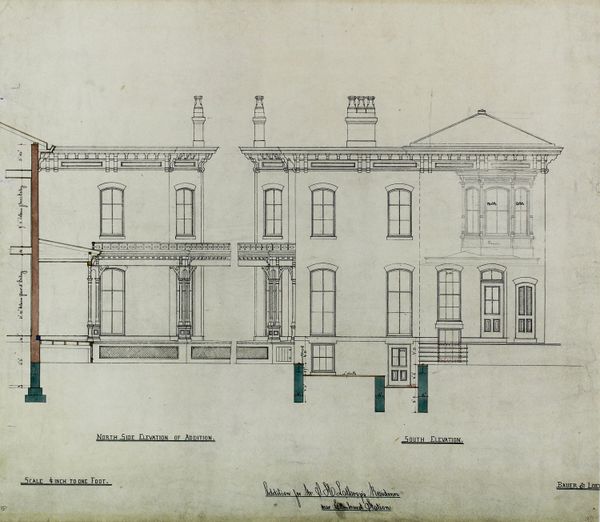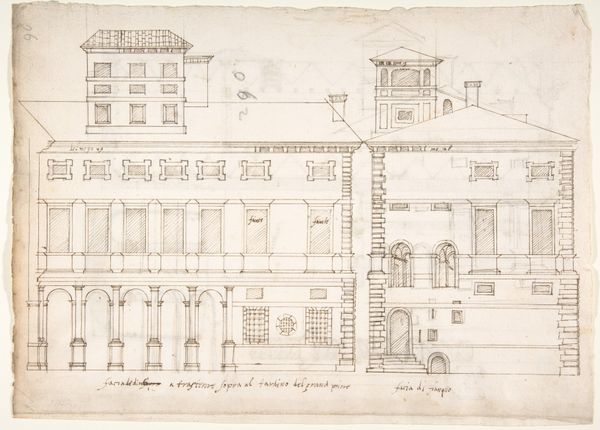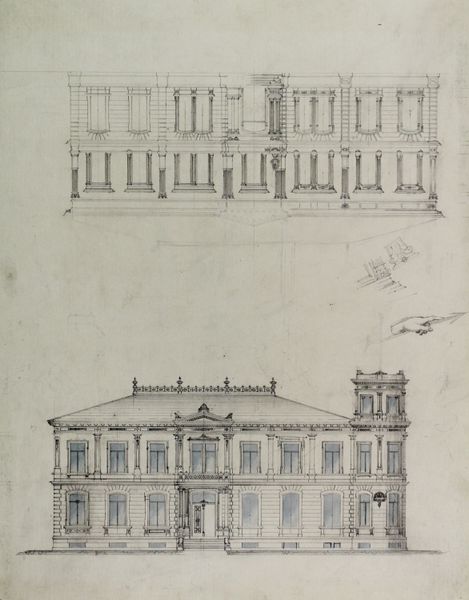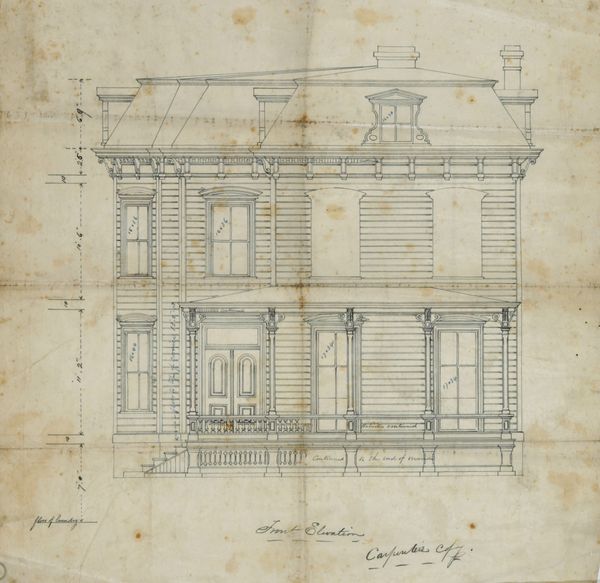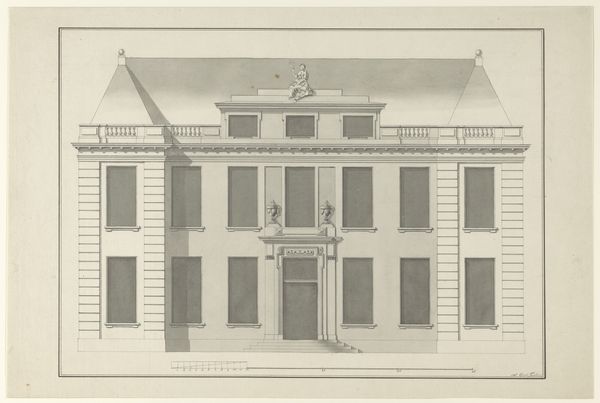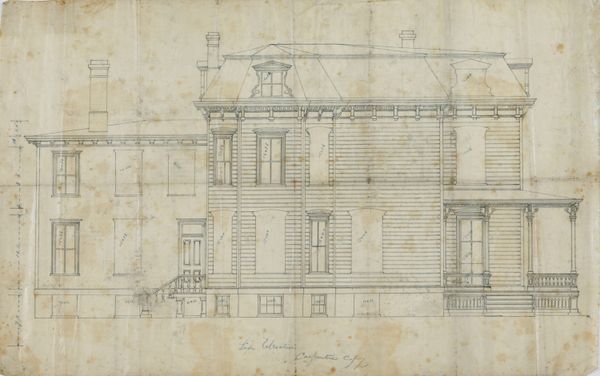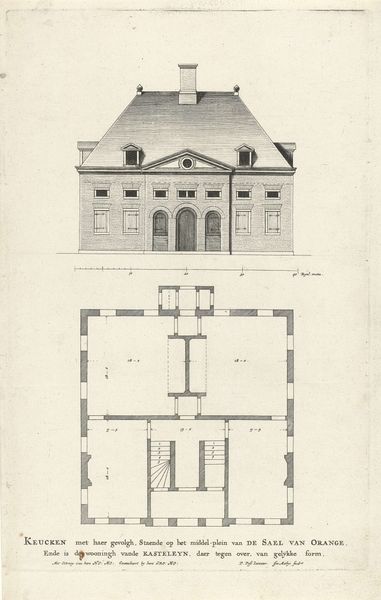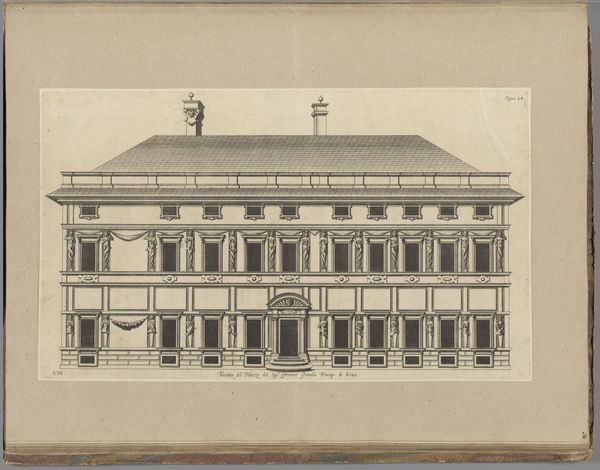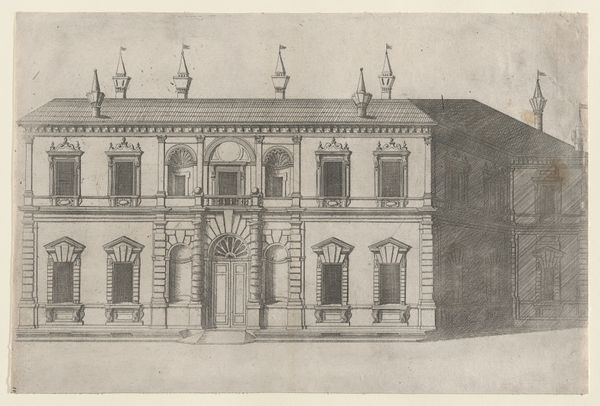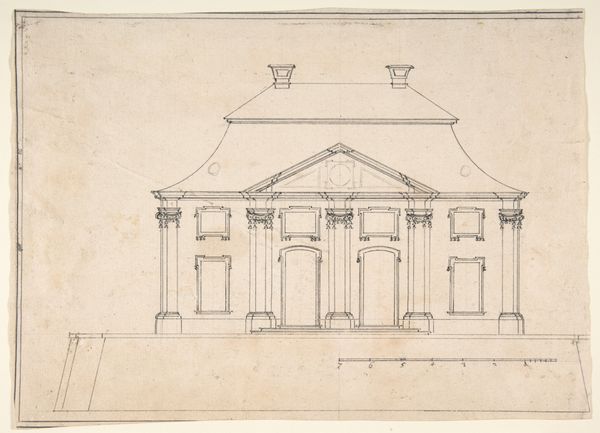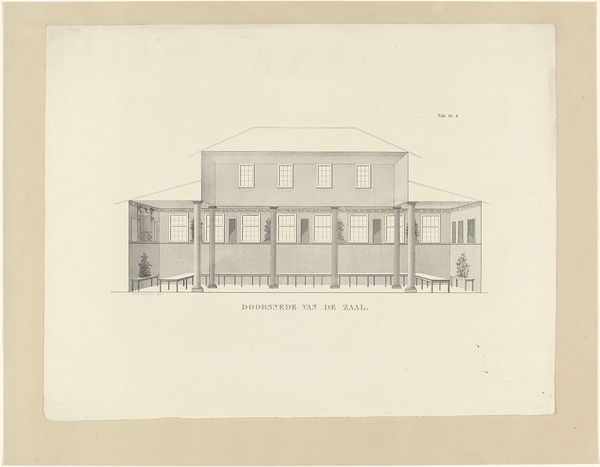
Joseph H. Lathrop House Addition, Elmhurst, Illinois, Elevation and Section c. 1870
0:00
0:00
drawing, paper, ink, pencil, architecture
#
architectural sketch
#
drawing
#
paper
#
historic architecture
#
ink
#
pencil
#
architectural drawing
#
architecture drawing
#
history-painting
#
architecture
Dimensions: 47 × 57.7 cm (18 1/2 × 22 3/4 in.)
Copyright: Public Domain
Curator: This architectural drawing from around 1870 by Bauer and Loebnitz, depicting the Joseph H. Lathrop House Addition, is an incredible example of how architectural plans operate as material objects beyond just representations of buildings. Editor: It's neat! It feels…precise, but also kind of fragile given it's on paper. The detail is captivating. What do you find most striking about this piece? Curator: Well, for me, it’s thinking about what the very act of drawing *meant* at the time. Consider the labor involved. Each line, each measurement meticulously rendered in pencil and ink. It isn't just a design; it’s a physical record of intellectual and manual effort, a testament to the draftsmanship of the architects. How does that relate to the house that would have eventually emerged from that process, that labor? Editor: I guess the drawing makes me think of the *work* of architecture, more than the 'art'. Is that intentional? Like a commentary? Curator: Exactly! Think of the social context. The production of architectural drawings, and the subsequent construction of houses, was tied to larger systems of land ownership, capital, and class. Whose labor built this house? Who benefitted from it? Drawings such as this weren’t just neutral tools; they were part of a network of power. What does that labor *mean* when applied to building structures that reinforce inequalities? Editor: I never thought of it that way, that the plan itself could have so much significance beyond the eventual building itself. Curator: Absolutely. By focusing on the materials, process, and social context, we can uncover deeper meanings embedded within these seemingly straightforward architectural renderings. Considering that shifts our focus on how we understand art's cultural footprint. Editor: I like that...thanks! It gives a new perspective on how to interpret even technical drawings.
Comments
No comments
Be the first to comment and join the conversation on the ultimate creative platform.
